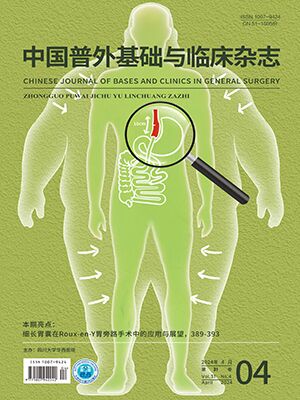| 1. |
Kobaly K, Kim CS, Mandel SJ. Contemporary management of thyroid nodules. Annu Rev Med, 2022, 73(1): 517-528.
|
| 2. |
Alexander EK, Cibas ES. Diagnosis of thyroid nodules. Lancet Diabetes Endocrinol, 2022, 10(7): 533-539.
|
| 3. |
van de Berg NJ, Meeuwsen FC, Doukas M, et al. Steerable needles for radio-frequency ablation in cirrhotic livers. Sci Rep, 2021, 11(1): 306-309.
|
| 4. |
Hercun J, Parikh E, Kleiner DE, et al. Recurrent nodular regenerative hyperplasia following liver transplantation in common variable immunodeficiency. Hepatology, 2021, 74(3): 1698-1701.
|
| 5. |
Ghomashchi S, Whyne CM, Chinnery T, et al. Impact of radiofrequency ablation (RFA) on bone quality in a murine model of bone metastases. PLoS One, 2021, 16(9): e0256076. doi: 10.1371/journal.pone.0256076.
|
| 6. |
Hu Z, Lu M, Wang X, et al. Diagnostic value of different 3-D shear wave elastography sections in the diagnosis of thyroid nodules. Ultrasound Med Biol, 2022, 48(9): 1957-1965.
|
| 7. |
Cheng Z, Liang P. Advances in ultrasound-guided thermal ablation for symptomatic benign thyroid nodules. Adv Clin Exp Med, 2020, 29(9): 1123-1129.
|
| 8. |
Polin M, Hur HC. Radiofrequency ablation of uterine myomas and pregnancy outcomes: an updated review of the literature. J Minim Invasive Gynecol, 2022, 29(6): 709-715.
|
| 9. |
Chen MH, Lin WC, Luo SD, et al. Residual, regrowth, and new growth of radiofrequency ablation for benign thyroid nodules of different volumes: two-year follow-up results. Int J Hyperthermia, 2022, 39(1): 1172-1178.
|
| 10. |
Bernardi S, Giudici F, Cesareo R, et al. Five-year results of radiofrequency and laser ablation of benign thyroid nodules: a multicenter study from the Italian Minimally Invasive Treatments of the Thyroid Group. Thyroid, 2020, 30(12): 1759-1770.
|
| 11. |
Lim JY, Kuo JH. Thyroid nodule radiofrequency ablation: complications and clinical follow up. Tech Vasc Interv Radiol, 2022, 25(2): 100824. doi: 10.1016/j.tvir.2022.100824.
|
| 12. |
孙梦锦, 李潜, 牛金灵, 等. 超声引导下射频消融对不同大小甲状腺良性结节的疗效研究. 中国超声医学杂志, 2023, 39(2): 134-137.
|
| 13. |
Lee DH, Kim JW, Lee JM, et al. Laparoscopic liver resection versus percutaneous radiofrequency ablation for small single nodular hepatocellular carcinoma: comparison of treatment outcomes. Liver Cancer, 2021, 10(1): 25-37.
|
| 14. |
Deandrea M, Trimboli P, Mormile A, et al. Determining an energy threshold for optimal volume reduction of benign thyroid nodules treated by radiofrequency ablation. Eur Radiol, 2021, 31(7): 5189-5197.
|
| 15. |
王桂林, 黄仁相, 洪运虎, 等. 超声引导下射频消融治疗原发性甲状腺功能亢进症的效果. 中国医学影像学杂志, 2023, 31(1): 20-24.
|
| 16. |
张燕. 超声引导下甲状腺结节射频消融术. 中华医学超声杂志 (电子版), 2021, 18(11): 1128.
|
| 17. |
伍宏兵, 李保启, 周维风, 等. 超声引导下微波消融甲状腺良性结节的疗效及影响因素. 中国临床医学影像杂志, 2023, 34(4): 238-241.
|
| 18. |
Ding AS, Xie DX, Zhang L, et al. Public perceptions of radiofrequency ablation versus standard surgery for benign thyroid nodules. Surgery, 2022, 172(1): 110-117.
|
| 19. |
Yan L, Zhang M, Li X, et al. A Nomogram to predict regrowth after ultrasound-guided radiofrequency ablation for benign thyroid nodules. Front Endocrinol (Lausanne), 2022, 12: 774228. doi: 10.3389/fendo.2021.774228.
|




